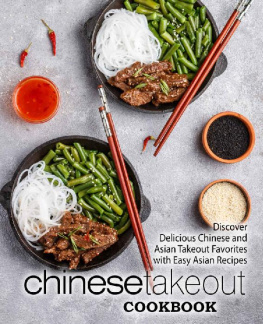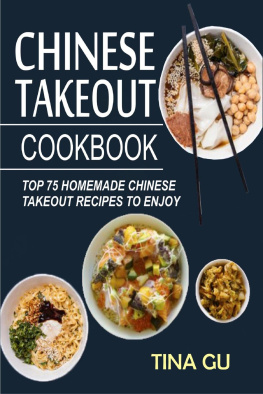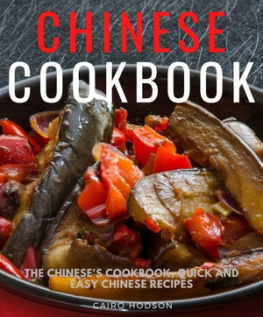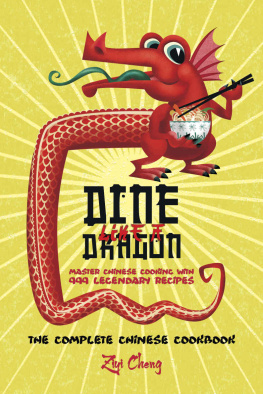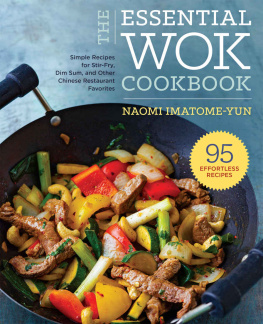

Copyright 2020 by Rockridge Press, Emeryville, California
No part of this publication may be reproduced, stored in a retrieval system, or transmitted in any form or by any means, electronic, mechanical, photocopying, recording, scanning, or otherwise, except as permitted under Sections 107 or 108 of the 1976 United States Copyright Act, without the prior written permission of the Publisher. Requests to the Publisher for permission should be addressed to the Permissions Department, Rockridge Press, 6005 Shellmound Street, Suite 175, Emeryville, CA 94608.
Limit of Liability/Disclaimer of Warranty: The Publisher and the author make no representations or warranties with respect to the accuracy or completeness of the contents of this work and specifically disclaim all warranties, including without limitation warranties of fitness for a particular purpose. No warranty may be created or extended by sales or promotional materials. The advice and strategies contained herein may not be suitable for every situation. This work is sold with the understanding that the Publisher is not engaged in rendering medical, legal, or other professional advice or services. If professional assistance is required, the services of a competent professional person should be sought. Neither the Publisher nor the author shall be liable for damages arising herefrom. The fact that an individual, organization, or website is referred to in this work as a citation and/or potential source of further information does not mean that the author or the Publisher endorses the information the individual, organization, or website may provide or recommendations they/it may make. Further, readers should be aware that websites listed in this work may have changed or disappeared between when this work was written and when it is read.
For general information on our other products and services or to obtain technical support, please contact our Customer Care Department within the United States at (866) 744-2665, or outside the United States at (510) 253-0500.
Rockridge Press publishes its books in a variety of electronic and print formats. Some content that appears in print may not be available in electronic books, and vice versa.
TRADEMARKS: Rockridge Press and the Rockridge Press logo are trademarks or registered trademarks of Callisto Media Inc. and/or its affiliates, in the United States and other countries, and may not be used without written permission. All other trademarks are the property of their respective owners. Rockridge Press is not associated with any product or vendor mentioned in this book.
Interior and Designer: Regina Stadnik
Art Producer: Karen Williams
Editor: Ada Fung
Production Manager: Michael Kay
Production Editor: Melissa Edeburn
Photography 2020 Darren Muir. Food styling by Yolanda Muir.
: Zigi Lowenberg
ISBN: Print 978-1-64152-694-4
eBook 978-1-64152-695-1
R0

To Alice and Phyllis, our mothers, who instilled in us the love for nourishing others
CONTENTS
Growing up in lower Manhattan, I (Terri) lived a short walk away from Chinatown. My mom shopped there, and dinners often included a steamed fish that she bought on her way home from work. On weekends, I helped her fold hundreds of wontons to keep in our freezer for quick dinners and soups.
When I moved out on my own, my first attempt at stir-frying produced a soggy mush, but my boyfriend ate it and said it was great (he lied). I didnt dare try again until I enrolled in a culinary school where Chef Ng patiently taught stir-frying basics using a three-foot-wide wok. Later, working at Draegers Cooking School, I was fortunate to assist well-known visiting chefs, and I learned a great deal from their expertise. My interest grew, and soon I was teaching basic Chinese cooking classes and making takeout favorites such as kung pao chicken, egg rolls, and beef with broccoli.
I (Mia) grew up in northern California, so special trips to San Franciscos Chinatown for cashew chicken, chow mein, fried rice, moo shu pork, wonton soup, and fortune cookies were some of my favorites as a kid.
It wasnt until I was in my 20s that I started to discover the depth of regional Chinese food. My love of food sent me to markets filled with ingredients that I had no idea what to do with but that inspired me to learn and experiment. At the time, I lived in a house with six hungry roommates; wok cooking seemed like an easy way to feed a crowd. Excitedly, I bought my first wok. A lot of not really great stir-fry ensued. I began reading The Modern Art of Chinese Cooking: Techniques & Recipes by Barbara Tropp (still one of my favorites), I asked questions, and with practice, my stir-fries became delicious!
; ; ;
We jumped at the opportunity to write this cookbook together. We have been colleagues and dear friends for more than 15 years. We hope our unique friendship and passion for teaching comes through in these pages. We hope you enjoy these recipes as much as we enjoyed writing them for you! Be brave, be bold, have fun, and never apologize for kitchen mistakes.
Welcome to your wok cooking adventure! Whether you are hoping to acquire new wok skills or to learn how to make your favorite Chinese restaurant dishes, we are here to help. In this chapter, well cover the history of Chinese food and wok cooking. Well tell you how to choose the right wok and how to take care of it, and well explain wok cooking techniques and provide troubleshooting tips.
A Brief History of Chinese Food and Wok Cooking
Chinese cuisine has many regional sub-cuisines. The more inland regions of Sichuan and Hunan, for example, have hot, spicy flavors, whereas coastal regions such as Guangzhou and Shanghai have milder flavors. What unites the cuisines of these regions is use of the wok as one of the primary cooking vessels.
Chinese wok dishes are uniquely well suited to cooking at home because many evolved from the need to make a few ingredients stretch far and to use up small quantities of food. In fact, stir-frying makes the most out of small pieces of protein. A thinly sliced 6-ounce piece of beef, for example, takes very little time to cook, and when added to a variety of stir-fried vegetables, it can comfortably feed as many as four people.
The practicality of wok cooking led to the creation of Chinese-American takeout favorites. Egg foo yong, General Tsos chicken, moo shu pork, and fried rice were born out of Chinese immigrants attempts to recreate the tastes of home utilizing locally available ingredients and to adapt them to draw customers to their restaurants.
All over the world, Chinese immigrants have adapted traditional Chinese dishes to local food and taste preferences to create fusion gems such as Singaporean rice noodles (stir-fried rice noodles with Chinese barbecue pork and curry powder) and Peruvian lomo saltado (sliced beef and tomatoes stir-fried with French fries and onions).





